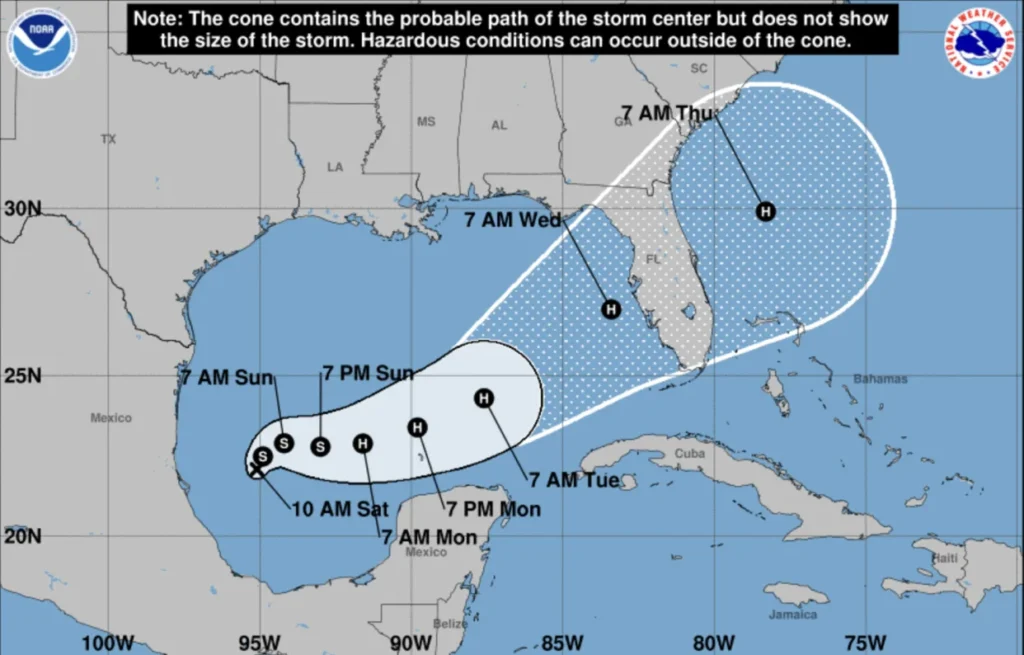MIAMI — Tropical Storm Milton formed in the Gulf of Mexico on Saturday and is forecast to bring “life-threatening impacts” to Florida — a state just ravaged by Hurricane Helene — next week.
In its latest advisory, National Hurricane Center meteorologists warned the forecast shows the system nearing near “major hurricane strength” when it makes landfall along Florida’s West Coast. “An intense hurricane with multiple life-threatening hazards is likely to affect the west coast of the Florida Peninsula next week,” the advisory stated.
Where is Tropical Storm Milton and what is its path?
As of 1 p.m. ET:
- Milton was located around 220 miles north-northeast of Veracruz, Mexico
- The storm had maximum sustained winds of 40 mph
- The storm was moving north-northeast at 3 mph across the Gulf of Mexico
“There is an increasing risk of life-threatening storm surge and wind impacts for portions of the west coast of the Florida Peninsula beginning late Tuesday or Wednesday,” the NHC said in its forecast. “Residents in these areas should ensure they have a hurricane plan in place.”
Florida is already expected to see rainfall outside of the storm on Sunday and Monday. Heavy rainfall from Tropical Storm Milton is forecast for Tuesday and Wednesday, according to the hurricane center. “This rainfall brings the risk of flash, urban, and areal flooding, along with minor to isolated moderate river flooding,” meteorologists said.
Outside of Tropical Storm Milton, Hurricane Kirk, currently a Category 3 hurricane, is generating swells that are expected to bring “life-threatening surf and rip current conditions” to the U.S. East Coast by Sunday.
Milton comes days after Helene
Tropical Storm Milton comes just over a week after Hurricane Helene made landfall in Florida’s Big Bend region as a monstrous Category 4 storm, causing at least 20 deaths in Florida alone.
After making landfall with 140 mph winds, the storm moved inland across the Southeast, leaving more than 200 people dead and leaving widespread destruction in its wake. Following the storm, the state’s infrastructure and emergency services have been stretched thin. As of Saturday afternoon, thousands of utility customers were still without power in Florida.
Active hurricane season
Hurricane season runs from June 1 through Nov. 30, but the peak of heightened activity is usually from August through October. According to the National Oceanic and Atmospheric Administration, a “typical” hurricane season in the Atlantic will usually see around 14 named storms, “of which seven become hurricanes and three become major hurricanes.”
As of early October, eight hurricanes formed in the Atlantic — with Milton becoming the 13th named storm of the Atlantic hurricane season. As CNN notes, hurricane season is running ahead of the expected schedule. Typically, the 13th storm of the season wouldn’t hit until at least October 25.
Earlier this week, Homeland Security Secretary Alejandro Mayorkas warned that the Federal Emergency Management Agency did not have the funds to make it through the season. President Biden said this week that Congress may need to pass a supplemental spending bill in the next couple of months to help fund states’ recovery efforts.
By KAITLIN REILLY/Yahoo! News

